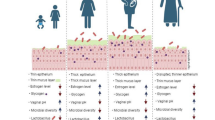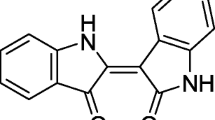Abstract
Vulvovaginal candidiasis (VVC) and recurrent vulvovaginal candidiasis (RVVC) are the most common lower genital tract infections in reproductive women. In recent years, the research on its pathogenesis mainly focuses on vaginal local immunity and IL-17 as key factors in adaptive immunity, attracting much attention. However, the role of IL-17 in local immunity in VVC and RVVC is poorly understood. At the same time, neutrophils are considered the most effective way to control and eliminate candidal infection and have a controversial role in VVC and RVVC. In this study, we built a mouse RVVC model. After analyzing the vaginal lavage solution of RVVC mice with an inflammatory factor antibody chip and ELISA, we found that IL-17 may play a protective role in RVVC. The experiment of constructing RVVC mice with different concentrations of IL-17 using halofuginone and comparing the vaginal fungi load and vaginal epithelial damage verified that IL-17 had a protective effect in RVVC. In addition, in vitro and in vivo studies found that IL-17 can promote neutrophil apoptosis and recruit neutrophils in the vagina. The neutrophils in the vagina can secrete IL-17 in an autocrine manner. These two may be why IL-17 plays a protective role in RVVC. In summary, the study suggests that IL-17-mediated regulation of neutrophil function is involved in host immune response to RVVC, which helps us to further understand the potential mechanism of IL-17 in RVVC.






Similar content being viewed by others
Data Availability
The authors declare that all data and materials used in this research are available for consultation.
References
Rodriguez-Cerdeira C, Gregorio MC, Molares-Vila A, Lopez-Barcenas A, Fabbrocini G, Bardhi B, et al. Biofilms and vulvovaginal candidiasis. Colloids Surf B Biointerfaces. 2019;174:110–25.
Yano J, Peters BM, Noverr MC, Fidel PL Jr. Novel mechanism behind the immunopathogenesis of vulvovaginal candidiasis: “neutrophil anergy.” Infect Immun. 2018;86(3):e00684-17. https://doi.org/10.1128/IAI.00684-17.
Ardizzoni A, Wheeler RT, Pericolini E. It Takes Two to Tango: How a Dysregulation of the Innate Immunity, Coupled With Candida Virulence, Triggers VVC Onset. Front Microbiol. 2021;12:692491.
Kalia N, Singh J, Sharma S, Kaur M. SNPs in 3'-UTR region of MBL2 increases susceptibility to recurrent vulvovaginal infections by altering sMBL levels. Immunobiology. 2019;224(1):42–9.
Shao MK, Qi WJ, Hou MY, Luo DD. Analysis of pathogenic factors of Candida albicans and the effect of vaginal immunization on recurrent vulvovaginal candidiasis in mice. J Obstet Gynaecol Res. 2022;48(3):857–65.
Gabrielli E, Sabbatini S, Roselletti E, Kasper L, Perito S, Hube B, et al. In vivo induction of neutrophil chemotaxis by secretory aspartyl proteinases of Candida albicans. Virulence. 2016;7(7):819–25.
Pericolini E, Gabrielli E, Amacker M, Kasper L, Cassone A. Secretory Aspartyl Proteinases Cause Vaginitis and Can Mediate Vaginitis Caused by Candida albicans in Mice. mBio. 2015;6(3):e00724.
Rosati D, Bruno M, Jaeger M, Ten Oever J. Recurrent vulvovaginal candidiasis: an immunological perspective. Microorganisms. 2020;8(2):144.
Patel DD, Kuchroo VK. Th17 cell pathway in human immunity: lessons from genetics and therapeutic interventions. Immunity. 2015;43(6):1040–51.
Jiang L, Fang M, Tao R, Yong X, Wu T. Recombinant human interleukin 17A enhances the anti-Candida effect of human oral mucosal epithelial cells by inhibiting Candida albicans growth and inducing antimicrobial peptides secretion. J Oral Pathol Med. 2020;49(4):320–7.
Peters BM, Coleman BM, HME W, Barker KS, FEY A, Cipolla E, et al. The interleukin (IL) 17R/IL-22R signaling axis is dispensable for vulvovaginal candidiasis regardless of estrogen status. J Infect Dis. 2020;221(9):1554–63.
Pietrella D, Rachini A, Pines M, Pandey N, Mosci P, Bistoni F, et al. Th17 cells and IL-17 in protective immunity to vaginal candidiasis. PLoS One. 2011;6(7):e22770.
Klaile E, Prada Salcedo JP, Klassert TE, Besemer M, Bothe AK, Durotin A, et al. Antibody ligation of CEACAM1, CEACAM3, and CEACAM6, differentially enhance the cytokine release of human neutrophils in responses to Candida albicans. Cell Immunol. 2021;371:104459.
Luo S, Skerka C, Kurzai O, Zipfel PF. Complement and innate immune evasion strategies of the human pathogenic fungus Candida albicans. Mol Immunol. 2013;56(3):161–9.
Kobayashi SD, Voyich JM, Buhl CL. Global changes in gene expression by human polymorphonuclear leukocytes during receptor-mediated phagocytosis: Cell fate is regulated at the level of gene expression. Proc Natl Acad Sci U S A. 2002;99(10):6901–6.
Maimon N, Zamir ZZ, Kalkar P, Zeytuni-Timor O, Ariel A. The pro-apoptotic ARTS protein induces neutrophil apoptosis, efferocytosis, and macrophage reprogramming to promote resolution of inflammation. Apoptosis. 2020;25(7-8):558–73.
El-Houssaini HH, Elnabawy OM, Nasser HA, Elkhatib WF. Correlation between antifungal resistance and virulence factors in Candida albicans recovered from vaginal specimens. Microb Pathog. 2019;128:13–9.
Pines M, Spector I. Halofuginone - the multifaceted molecule. Molecules. 2015;20(1):573–94.
Khader SA, Gaffen SL, Kolls JK. Th17 cells at the crossroads of innate and adaptive immunity against infectious diseases at the mucosa. Mucosal Immunol. 2009;2(5):403–11.
Brubaker SW, Bonham KS, Zanoni I, Kagan JC. Innate immune pattern recognition: a cell biological perspective. Annu Rev Immunol. 2015;33(1):257–90.
Cassone A, Vecchiarelli A, Hube B. Aspartyl proteinases of eukaryotic microbial pathogens: from eating to heating. PLoS Pathog. 2016;12(12):e1005992.
Miossec P, Kolls JK. Targeting IL-17 and TH17 cells in chronic inflammation. Nat Rev Drug Discov. 2012;11(10):763–76.
Bunte K, Beikler T. Th17 cells and the IL-23/IL-17 axis in the pathogenesis of periodontitis and immune-mediated inflammatory diseases. Int J Mol Sci. 2019;20(14):3394.
Chang SH. T helper 17 (Th17) cells and interleukin-17 (IL-17) in cancer. Arch Pharm Res. 2019;42(7):549–59.
Gaffen SL. Recent advances in the IL-17 cytokine family. Curr Opin Immunol. 2011;23(5):613–9.
Taylor PR, Roy S, Leal SM Jr, Sun Y, Howell SJ, Cobb BA, et al. Activation of neutrophils by autocrine IL-17A-IL-17RC interactions during fungal infection is regulated by IL-6, IL-23, RORgammat and dectin-2. Nat Immunol. 2014;15(2):143–51.
Kalimo H, Zoppo G, Paetau A. Polymorphonuclear neutrophil infiltration into ischemic infarctions: myth or truth? Acta Neuropathol. 2013;125(3):313–6.
Wang W, Zhou A, Zhang X, Xiang Y, Huang Y, Wang L, et al. Interleukin 17A promotes pneumococcal clearance by recruiting neutrophils and inducing apoptosis through a p38 mitogen-activated protein kinase-dependent mechanism in acute otitis media. Infect Immun. 2014;82(6):2368–77.
Sun C, Hideki F, Kono H, et al. Interleukin 17A plays a role in lipopolysaccharide/D-galactosamine-induced fulminant hepatic injury in mice. J Surg Res. 2015;199(2):487–93.
Fidel PL, Barousse M, Espinosa T, Ficarra M, Dunlap K. An intravaginal live Candida challenge in humans leads to new hypotheses for the immunopathogenesis of vulvovaginal candidiasis. Infect Immun. 2004;72(5):2939.
Cassone A, Sobel JD. Experimental models of vaginal candidiasis and their relevance to human candidiasis. Infect Immun. 2016;84(5):1255–61.
Petrova MI, Elke L, Shweta M, Nicole I, Sarah L. Lactobacillus species as biomarkers and agents that can promote various aspects of vaginal health. Front Physiol. 2015;6:81.
Code Availability
Not applicable
Funding
This research was supported by a grant from the National Natural Science Foundation of China (Grant No.82260302; Grant No. 81660248) and the Yunnan Provincial Department of Education Scientific Research Fund (Grant No.2022J0259).
Author information
Authors and Affiliations
Contributions
S-MK, Q-WJ, H-MY, and L-SN conducted the experiments. Q-WJ planned and supervised the experiments. S-MK wrote the paper. All authors gave intellectual input to the study and approved the final version of the manuscript.
Corresponding author
Ethics declarations
Ethics Approval
The experiment was approved by the Institutional Animal Care and Use Committee (IACUC) at Kunming Medical University (No.kmmu2020178).
Consent to Participate
Not applicable
Consent for Publication
Not applicable
Conflict of Interest
The authors declare no competing interests.
Additional information
Publisher’s Note
Springer Nature remains neutral with regard to jurisdictional claims in published maps and institutional affiliations.
Rights and permissions
Springer Nature or its licensor (e.g. a society or other partner) holds exclusive rights to this article under a publishing agreement with the author(s) or other rightsholder(s); author self-archiving of the accepted manuscript version of this article is solely governed by the terms of such publishing agreement and applicable law.
About this article
Cite this article
Shao, M., Hou, M., Li, S. et al. The Mechanism of IL-17 Regulating Neutrophils Participating in Host Immunity of RVVC Mice. Reprod. Sci. 30, 3610–3622 (2023). https://doi.org/10.1007/s43032-023-01291-z
Received:
Accepted:
Published:
Issue Date:
DOI: https://doi.org/10.1007/s43032-023-01291-z




